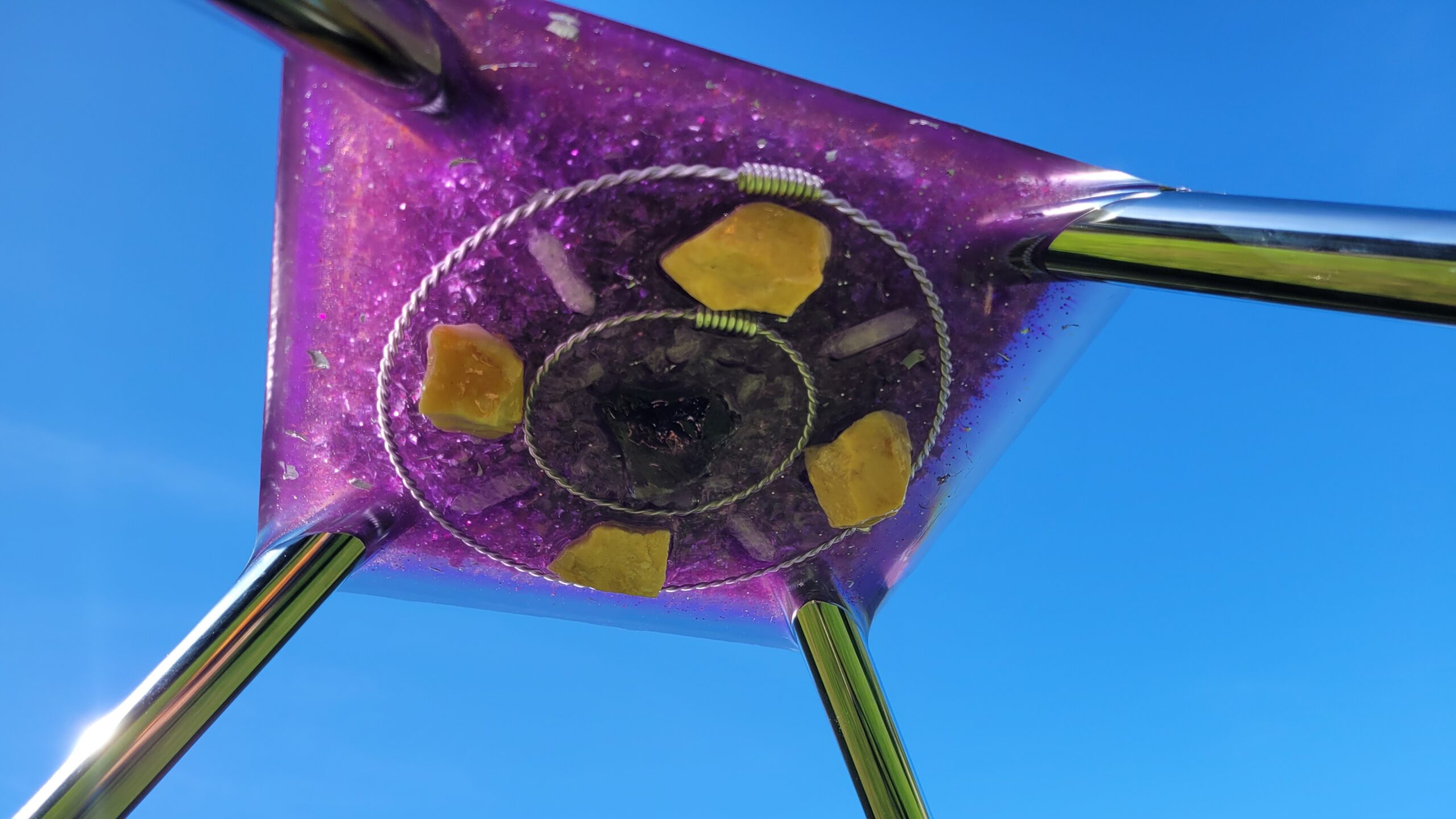Pyramid meditation, with its unique allure, has intrigued many since gaining popularity decades ago. Some swear by its ability to amplify energy and focus during meditation, but what’s the real deal? Is the magic of pyramid-shaped structures more than skin deep, or is it just a cleverly spun tale?

There’s a clash between scientific skepticism and earnest spiritual experiences. Some practitioners believe the pyramid’s shape taps into universal energy fields, enhancing one’s meditative state and, potentially, healing powers. While science has yet to catch up with definitive proof, this geometry-based practice has captivated hearts and minds worldwide.
People who regularly meditate under pyramids often speak of intense focus and heightened relaxation. These stories, while anecdotal, add to the enchantment surrounding pyramid meditation. The triangular sides and square base are thought to draw energy in a way that envelops the meditator, producing a unique experience.
Placebo or not, the power of belief can’t be understated in meditation. Whether pyramids genuinely boost energy flow or simply offer mental peace because one expects it to, the benefits can still be profound. Meditation is, after all, a deeply personal journey, where what works for one may not be the silver bullet for another.
If you’re curious about pyramid meditation, the best way to find out if it works for you is to try it yourself. Approach it with an open mind and see where it leads. Sometimes, the journey itself is the most enlightening part of the experience.
Unlocking the Benefits: Why Use a Meditation Pyramid?
Meditation with a twist—that’s what pyramid meditation offers. Its potential benefits reach beyond ordinary meditation through its fascinating use of geometry. So, what’s the buzz about these mystical structures, and why might they add value to your practice?
Pyramids have captured human imagination for centuries, standing as enigmas of ancient architecture. Their role in meditation, especially, is linked to stories of ‘pyramid power.’ This idea took root when the shape’s energy-amplifying qualities became a hot topic, inspiring curious minds to explore its impact on the mind and body.
Physically, spending time meditating under a pyramid might offer perks like stress relief and a sense of calm. Some meditators report feeling more relaxed and focused after sessions beneath a pyramid. The belief is that the pyramid channels energies which help align the body and mind, possibly improving sleep and boosting energy levels throughout the day.
Emotionally, this practice might help clear mental fog, promoting a sense of clarity and focus. The idea is that a pyramid harnesses and stabilizes emotional energies, leading to enhanced emotional well-being. This could explain why some folks feel sharper and more balanced after their practice sessions.
The magic of the pyramid isn’t in the shape alone but also in how it seems to interact with our consciousness. The design purportedly amplifies one’s focus and gets energies flowing in ways regular meditation might not. Think of it as tuning in and amplifying the station for a clearer, richer experience.

For those open to new experiences, pyramid meditation offers a fresh and potentially enriching path, blending age-old wisdom with modern mindfulness practices. If the idea intrigues you, it’s worth giving it a try to see how it aligns with your meditation goals.
Step-by-Step Guide: How to Meditate with a Pyramid
For those ready to give it a go, using a pyramid can be a game-changer in your meditation routine. Here’s how to get started, step by step, embracing this unique geometric tool.
First, find your perfect meditation spot. Peaceful, quiet locations help create the perfect vibe for your session. Nature spots are fantastic if you can swing it, giving your mind a natural serene backdrop.
Selecting the right pyramid is key. Materials matter—a lot. Copper is a favorite with many for its reputed energy-blocking abilities, while wood offers a natural feel that many find grounding. Whatever you choose, avoid plastic, as natural materials tend to resonate better with energy work.
Setting up your pyramid correctly is crucial. Aligning it with the cardinal directions—North, South, East, West—maximizes its efficiency. This alignment supposedly draws in and channels the energy most effectively, so a compass might come in handy here.
Now, focus on your breathing. Slow, deep breaths are your best friend, easing you into a meditative state. Let your thoughts drift by without engaging them, and focus instead on the flow of air and the energy around you.
Watch out for some common pitfalls. Don’t rush the process or have hefty expectations—let the pyramid work its subtle magic over time. Stay open to the sensations and experiences during meditation, and note how you feel before and after.
Incorporating a pyramid into your practice is more about exploring how it complements your existing habits than upending them. Enjoy the discovery and see where this unconventional meditation aid might lead you.
Different Styles and Approaches to Pyramid Meditation
Pyramid meditation isn’t a one-size-fits-all deal. From traditional practices to modern twists, there’s plenty of room to make it your own. Exploring this diversity can enrich your experience, adding layers to your mindfulness journey.
Globally, pyramid meditation takes on cultural hues. Various communities blend the practice with local spiritual traditions, giving it a personal touch. This is the beauty of meditation—it can transcend boundaries and integrate seamlessly with different worldviews.
The Pyramid Spiritual Societies Movement (PSSM) stands out in this meditative tapestry. With roots in Anapanasati meditation, it emphasizes mindfulness enhanced by pyramid structures. Followers believe that pyramids help in channeling energy more effectively during meditation sessions, leading to a heightened state of awareness.
When it comes to selection, natural materials make a real difference. Many steer clear of plastics, opting for copper or wooden pyramids. Each material—and the angle of the pyramid—supposedly influences how energy is focused on different chakras, offering a tailored meditative experience.
Experimenting with diverse pyramid meditation styles can lead to personal revelations. Whether you integrate it with familiar meditation practices or venture into new approaches, the key is openness. There’s no wrong way to explore—it’s about what resonates with you personally.
By understanding and appreciating these various techniques, you’re not just practicing meditation; you’re embracing a broader perspective that might enrich your practice in unexpected ways. This diversity in approach is what makes pyramid meditation endlessly fascinating to those who seek to go beyond the ordinary.

The Case for Pyramid Meditation: A Conclusion
Pyramid meditation offers a captivating blend of history, geometry, and mindfulness that attracts both skeptics and believers alike. Its potential benefits—rangig from deepened relaxation to enhanced focus—make it a compelling option for those exploring different meditation paths.
The allure lies in both anecdotal evidence and a sense of curiosity that drives many to try something unconventional. While scientific validation is still catching up, the experiences of those who practice pyramid meditation are overwhelmingly positive, suggesting a unique synergy between the mind, body, and environment.
Meditation, regardless of the technique, serves as a powerful tool in personal and spiritual growth. A pyramid might just be another way to deepen this enriching practice, adding an interesting twist to your routine and potentially uncovering new insights about yourself.
Looking ahead, the future of pyramid meditation seems bright. As interest grows, so does innovation in approach and understanding, blending traditional knowledge with modern mindfulness practices. Keeping an open mind helps navigate these developments, making room for unexpected benefits.
For beginners curious about this enticing world, there’s no better time to start exploring than now. Embrace the journey, experiment with this ancient practice, and who knows? You might just unlock a new dimension in your meditation experience.


From what I can read, meditation pyramids offers lots of benefits. You can benefit from sacred geometry in your mindfulness routine, while being relieved from stress, anger, and anxiety. Moreover, you can also benefit from the benefits of the pyramid itself because it brings you spiritual alignment. Can you imagine how our ancestors had so much knowledge that we don’t, despite our technological advancements?!
Hi, yes the ancients certainly knew a lot more than we do now. However, I feel this knowledge is coming back to us. I certainly get intuitions and knowings about some of the creations I make. Thank you very much for your beautiful input.
As someone who has had a little exposure to meditation pyramids, i feel this is an excellent resource for those new to meditation and interested in incorporating pyramids into their practice. It provides clear explanations of what meditation pyramids are, their benefits, and practical tips for selecting the right one based on individual needs and preferences.
A question that i may ask is: What specific features should beginners look for in a meditation pyramid to maximise their meditation experience?
Hi Nikki
Thank you so much for your kind words! I’m thrilled you found the article to be a helpful resource, especially for newcomers exploring meditation pyramids.
For beginners, choosing a meditation pyramid with a few specific features can definitely enhance their experience. Here’s what to look for:
Optimal Angle (51.83°) – This angle is thought to align best with the Earth’s energy, concentrating it to create a balanced, calming space that supports deep relaxation.Durability and Material – Chrome or a strong metal alternative is a great choice because it maintains the pyramid’s form over time. This consistency helps preserve the energy-concentrating effects without frequent maintenance.Orgonite Apex – Adding an orgonite apex is highly beneficial for beginners, as it harmonizes EMF radiation and enhances the energetic atmosphere, helping meditators feel more grounded and centered.Comfortable Size – Beginners may benefit from a size that allows them to sit comfortably within the pyramid. This immersive experience can enhance focus and energy alignment, helping users feel the full effects of the meditation pyramid.
These features create a stable, energized environment, making it easier for beginners to feel relaxed and focused as they start their meditation journey.
Thanks again for your thoughtful comment, and happy meditating!
Regards, Alan.
How does the pyramid shape allegedly influence energy flow during meditation? What is the importance of aligning the pyramid with cardinal directions, and how does this enhance its effectiveness? How might the choice of materials and pyramid angles influence meditation outcomes? What role does the Pyramid Spiritual Societies Movement (PSSM) play in popularizing pyramid meditation? What are the potential emotional and physical benefits of pyramid meditation as described? For someone new to pyramid meditation, what initial steps would you recommend to ensure a positive experience? Why might pyramid meditation appeal to people seeking unconventional mindfulness practices? How does pyramid meditation compare with other geometric or object-based meditative practices?
### 1. **How does the pyramid shape allegedly influence energy flow during meditation?**
The pyramid shape is believed to concentrate and amplify energy, creating a meditative space that enhances focus, relaxation, and spiritual growth. This is often attributed to the geometry’s ability to align with natural energy fields, fostering a sense of balance and heightened awareness.
### 2. **What is the importance of aligning the pyramid with cardinal directions, and how does this enhance its effectiveness?**
Aligning the pyramid with cardinal directions—particularly its base parallel to north-south—allegedly harmonizes its energy with Earth’s magnetic field. Proponents claim this alignment enhances the flow of energy within the pyramid, optimizing its benefits during meditation.
### 3. **How might the choice of materials and pyramid angles influence meditation outcomes?**
The materials used, such as copper, wood, or quartz, are thought to affect energy conductivity and resonance. Similarly, precise angles (like the 51.83° of the Great Pyramid of Giza) are believed to maximize energy concentration, creating a more potent meditative environment.
### 4. **What role does the Pyramid Spiritual Societies Movement (PSSM) play in popularizing pyramid meditation?**
PSSM has been instrumental in promoting pyramid meditation globally by educating people on its benefits, constructing meditation pyramids, and organizing workshops and retreats. They focus on spreading awareness of how pyramids enhance mindfulness and spiritual experiences.
### 5. **What are the potential emotional and physical benefits of pyramid meditation as described?**
Pyramid meditation is said to promote emotional clarity, reduce stress, and foster inner peace. Physically, proponents claim it may improve energy levels, aid in healing, and enhance overall well-being through relaxation and energy alignment.
### 6. **For someone new to pyramid meditation, what initial steps would you recommend to ensure a positive experience?**
– **Start small**: Use a pyramid model or sit near a meditation pyramid.
– **Align correctly**: Ensure the pyramid is oriented with cardinal directions.
– **Set intentions**: Begin with a clear purpose or goal for your meditation.
– **Practice mindfulness**: Focus on breathing or a mantra while meditating.
– **Create a serene environment**: Minimize distractions for a calm experience.
### 7. **Why might pyramid meditation appeal to people seeking unconventional mindfulness practices?**
Its unique focus on geometry, energy amplification, and spiritual alignment provides a novel approach compared to traditional meditation. This appeals to individuals exploring alternative methods of mindfulness and self-discovery.
### 8. **How does pyramid meditation compare with other geometric or object-based meditative practices?**
Pyramid meditation emphasizes spatial energy concentration, while other practices (e.g., mandala meditations) focus on visual and symbolic elements. Unlike crystal-based practices that emphasize material properties, pyramid meditation integrates shape, alignment, and space for energy harnessing.
Would you like further elaboration on any of these aspects?